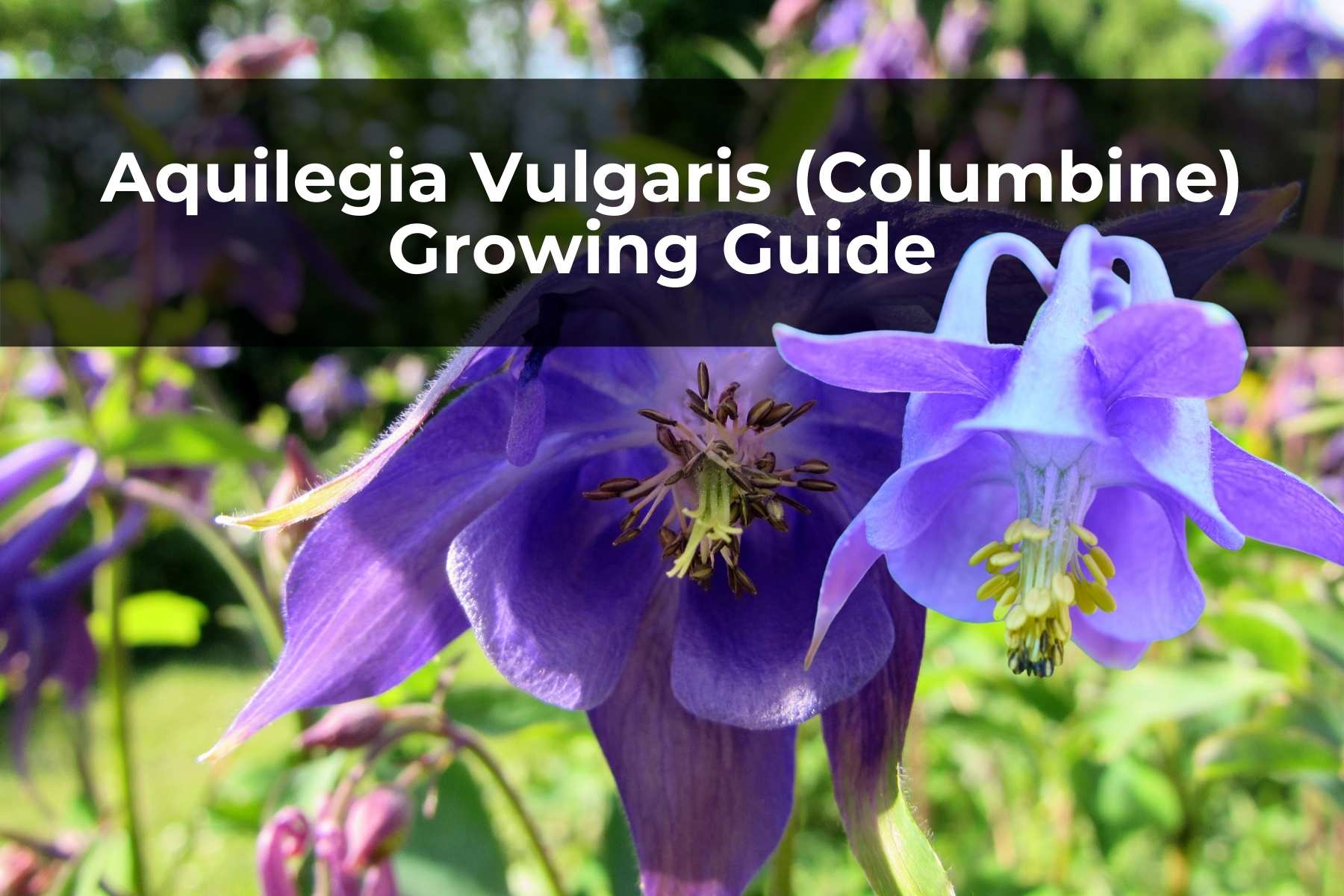Last Updated on April 12, 2024 by Real Men Sow
When there is not much color in the garden, Aquilegia Vulgaris can be a great choice. Aquilegias are available in many colors, and some have dark stems that match the flowers beautifully. They have been cut flowers since medieval times, so it is not surprising that they are used in this way. The leaves are very attractive and can be re-bloomed if they are cut back after flowering. You can buy aquilegia seeds to plant in the spring, as well as plants that can be planted in the spring.
How To Grow Aquilegia Vulgaris
Where To Grow Aquilegia Vulgaris
- Soil type: Aquilegias don’t have to be specific about the type of soil they use. It will work well with neutral, moist, but well-drained soil.
- Aspect & position: either full sun or partial shade. It is a medium-high plant that will thrive in the middle of a border. However, it can also seed itself up to half the time.
When To Plant Aquilegias
You can plant pot-grown aquilegia plants from February through November, but they will do better in spring. You can grow your aquilegia plants from seeds by sowing indoors between January to May, and outdoors directly sow from April to June.
How To Plant Aquilegia Vulgaris
Growing Aquilegia Vulgaris From Seed
Between January and May, thinly sow onto moist compost in seed trays. If the seeds take a while to germinate, stratification may be necessary. This is when they are tricked into believing they have gone through a cold winter. Wrap the tray in polythene, and place it in a refrigerator at 0-5degC for 2 to 3 weeks. Remove the tray and place in a greenhouse/windowsill at approx. 18-21degC. The seeds will germinate at around 30 to 90 days after which it is necessary to remove the polythene. Transplant the seedlings in 7cm pots, and then grow them into strong plants. For a naturalistic look, plant the seedlings in groups of three at 45 cm apart. You can also plant the seed outdoors from April to June.
Planting Containerised Aquilegia Vulgaris Plants
Remove the packaging from your plants once they arrive. After 20 minutes, stand the pots upright in water and give them a drink. Place in well-prepared ground in groups of three or more. Sprinkle Rootgrow mycorrhizal mushrooms (Rootgrow), onto the roots, and water well.
Propagating Aquilegia Vulgaris
Aquilegias require little care once established and are easy to grow. They are so happy that they can self-seed under the right conditions. However, offspring will not look exactly like their parents. If you’re filling a new border, this might be what you need. If you want to keep different varieties (aquilegias can be notoriously promiscuous) and if order is important in your garden, you can cut down the seed heads immediately after flowering.
The seeds can also be taken from your aquilegia plant. Wait for the flower’s petals to turn into a papery seed head. Tap the stem with a paper bag until all seeds are in the bag. To catch every seed, hang the stems upside-down in a large paper bag. Once they have dried completely, place them in a paper bag and label with a warning: the seeds can be poisonous if eaten.
General Care Guide for Aquilegia Vulgaris
Watering
After your aquilegia plants are established, they won’t require any more watering. To encourage the next flowering, you can cut the leaves.
Cutting back
Aquilegias don’t need to be trimmed, but it is a good idea to trim the foliage once the flowers have finished flowering. You will see a beautiful new flush of foliage within a few weeks if you give the plant a drink.
Pests, Diseases & Common Issues of Aquilegia Vulgaris
Although Aquilegia is relatively disease- and pest-free, there are some issues that need to be addressed.
Downy Mildew
This fungal infection is particularly dangerous and has been known to infect aquilegias since it first appeared a few years back. It can still cause problems in some gardens. It starts as a yellow spot on the leaves, but soon becomes a dark spot on the stems or flowers. The white powdery spores spread to the entire plant. As soon as possible, remove and destroy the affected plants. You should not replant the affected area with aquilegia until it has been at least one year. It is caused by airborne bacteria, and can be exacerbated by poor air circulation and damp weather.
Sawfly
Aquilegia sawfly, a small larva that eats the edges of leaves in spring, is called Aquilegia. If enough larvae hatch, they can decimate whole plants. The adult beetles lay eggs under the leaves. As soon as you see them, check for leaf damage and squash them. The plants will normally recover from leaf damage with another flush of foliage later in summer.
Leaves turning Yellow
It could be downy mildew (see above), or it could be an indication of stress or drought. If it persists even after watering, you can cut the foliage and mulch the plant to see if the problem returns. If it persists, it may be a disease. In this case, remove the plant from the garden and destroy it.

